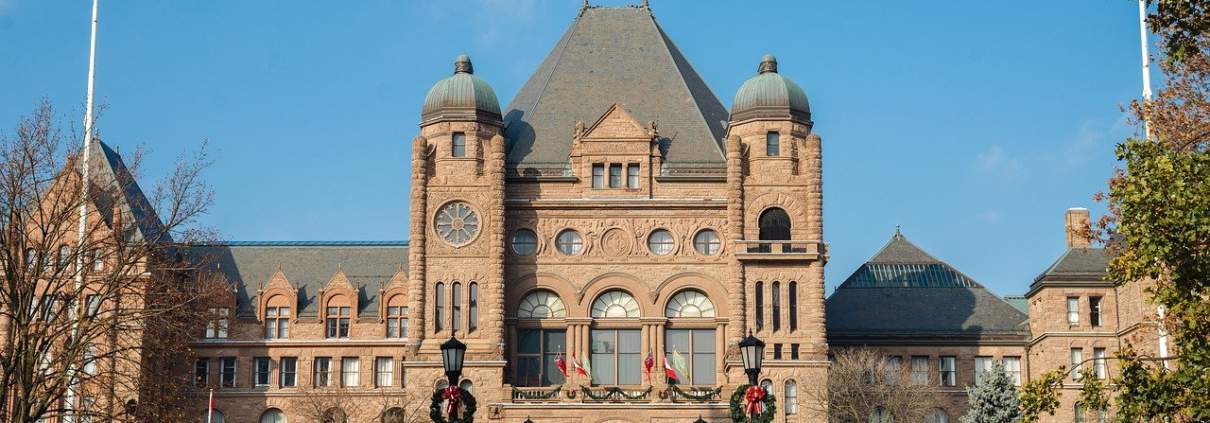2021 Ontario budget offers billions in relief for hard-hit businesses

Ontario Finance Minister Peter Bethlenfalvy promised to table a provincial budget that would do what it takes to carry the province through the final stages of COVID-19—and the 2021 Ontario budget lives up to the promise of continued major spending commitments. The proposed package would see Queen’s Park spend $173 billion in 2021-22, up from $152.3 billion in 2019–20. As the minister noted, “It’s clear that we are sparing no expense to defeat COVID‑19.”
Paying for it all is another matter. The Ford government is pledging to not cover the bill with tax increases or program cuts. It’s a common refrain from governments fearful of angering voters or the business community. Whether it’s a fiscal reality is unclear. The Tories are projecting a budget deficit of $33.1 billion in 2021–22, which is an improvement over the $38.5-billion deficit projected for 2020-2021 as the economy was mired in the worst of the COVID-19 crisis. The normally fiscally-restrained Progressive Conservatives are embracing the red ink, at least in the near term, to weather the lingering storm caused by the pandemic.
To that end, the budget proposes a wide range of spending to support businesses and individual Ontarians including:
- A second round of Ontario Small Business Support Grant payments to eligible recipients of between $10,000 and $20,000, for a total expenditure of $1.7 billion
- $400 million in funding over three years to develop new initiatives to support the province’s hard-hit tourism, hospitality and culture sectors
- $2.8 billion to enhance broadband connectivity for homes, businesses and communities across Ontario
- $61 million to temporarily enhance the Regional Opportunities Investment Tax Credit—a program designed to encourage business investment in regions of the province with lower employment growth—for total tax credit support of $155 million by 2022–23
- A new Ontario Jobs Training Tax Credit for 2021 that would provide up to $2,000 per recipient, and would cover 50 per cent of their eligible job training expenses. The government projects that the $260 million program would help train 230,000 people in 2021
- A third round of COVID-19 Child Benefit payments that would see payments doubled to $400 per child, and $500 for children with special needs. Spending on the program would total $1.8 billion since first being introduced last March
- A 20 per cent enhancement to the CARE tax credit for 2021 to help parents cover the cost of child care, boosting support from $1,250 to $1,500, on average
- The introduction of a new Seniors’ Home Safety Tax Credit that would provide approximately $30 million in support to help seniors stay in their homes longer
- An additional $1 billion in financial relief to help municipalities fund public services and support local economic recovery
- $50 million in grants to faith-based and cultural organizations
- $1 billion to support the province’s COVID-19 vaccination initiative and $2.3 billion for COVID-19 testing and contact tracing
- $1.4 billion in funding for personal protective equipment for frontline workers such as doctors and nurses
- An additional $1.8 billion in hospital funding for 2021–22
- An additional $933 million in funding over four years to build 30,000 new long-term care beds, along with $246 million over four years to improve living conditions in long-term care facilities and an additional $650 million in 2021-22 to protect seniors in long-term care homes from COVID-19
- $4.9 billion over four years to increase the average direct daily care to seniors living in long-term care homes to four hours a day
- $175 million in mental health and addiction funding for 2021-22
- $2.1 million over three years to support victims of crimes such as domestic violence
- A temporary doubling of the Regional Opportunities Investment Tax Credit—a credit available to Canadian-controlled private corporations that make qualifying investments in specific areas of the province—that would allow corporations to claim a 20 per cent credit on eligible expenditures of more than $50,000 and up to $500,000 “for property that becomes available for use in the corporation’s taxation year, and in the period beginning on March 24, 2021 and ending before January 1, 2023”
The budget also included language about modernizing tax anti-avoidance rules. Both provincial and federal governments could be setting their sights on raising more tax revenue by targeting aggressive tax planning. As the budget states: “Ontario is supportive of the federal government’s plan to consult on the modernization of Canada’s anti-avoidance rules, in particular the General Anti Avoidance Rule (GAAR). As part of the consultation, Ontario encourages the federal government to consider ways to combat artificial income shifting, such as through the use of trusts or corporate continuances, that put provincial tax revenue at risk.” More stringent rules could be forthcoming in the next federal budget slated for April.
Apparently the government hopes growth will boost the treasury in the years ahead and help it keep its no new taxes/no program cuts pledge. Deficit projections are for $27.7-billion in 2022-23 and $20.2-billion in 2023-24. Balanced budgets aren’t forecast until at least 2027, although that may prove an aspirational target.
The government is well aware of the fiscal challenges that lie ahead. As Bethlenfalvy said of the dire deficit situation yesterday when tabling the budget, “ … while this is neither sustainable nor desirable forever, I am absolutely, unequivocally convinced it is necessary to get through the pandemic and to recover stronger. In fact, I believe the price of inaction would be much, much higher in terms of lost lives, jobs and prosperity.” Let’s hope he’s correct.
Overall, the 2021 Ontario budget aims to provide much-needed support to struggling businesses and individual Ontarians. The former had complained that a lack of provincial assistance was hampering their ability to continue operations or bounce back as the economy gradually reopens.
It’s clear the Ford government was seeking to make amends by opening the provincial coffers and providing billions in added funding. It can expect calls for more support from particularly hard-hit sectors to continue.
Armando Iannuzzi, Co-Managing Partner


